Tokai Village, located on the Pacific coast of Ibaraki Prefecture, is a quiet town with a unique balance of tradition, science, and everyday Japanese life.
Known as the heart of Japan’s nuclear research and home to cutting-edge science facilities, Tokai is not famous as a tourist destination. In fact, very few international travelers visit here.
But that’s exactly why Tokai is special.
If you want to experience Japan beyond crowded tourist spots, discover local food, and walk through landscapes cherished by locals, Tokai Village is a hidden gem worth exploring.
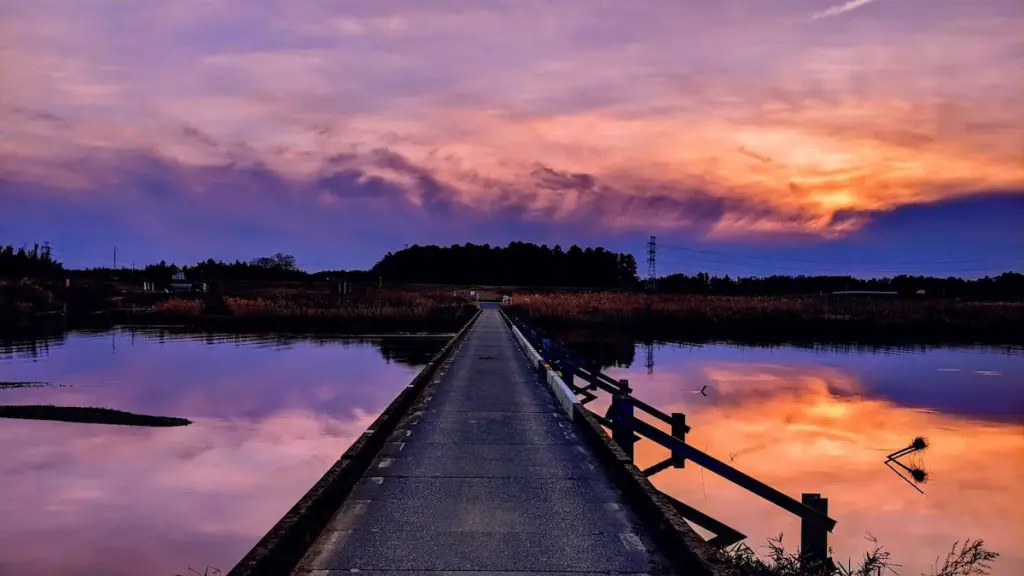
In this guide, I’ll introduce you to the best things to do, eat, and experience in Tokai Village — based on my perspective as a local resident.
🏯 Things to Do in Tokai Village
Explore Muramatsu Kokuzo-son Temple — 1200 Years of History
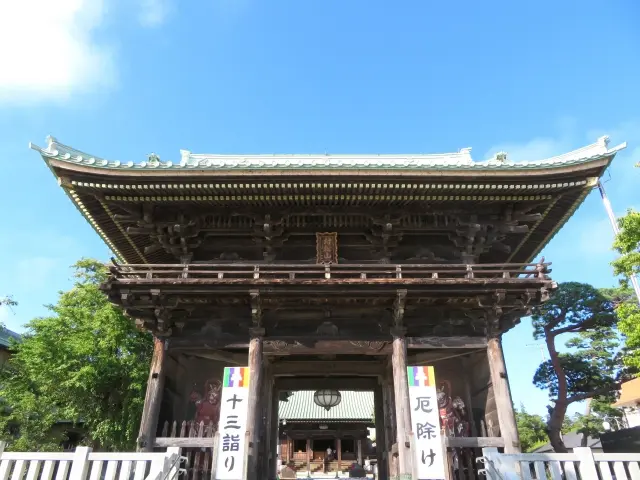
Founded around 1200 years ago by the monk Kobo Daishi under imperial order, Muramatsu Kokuzo-son is dedicated to Kokuzo Bosatsu, the Buddhist deity of wisdom.
Visitors pray here for wisdom, good fortune, and protection, making it a beloved temple in Ibaraki.
The grounds feature a main hall, surrounded by quiet forest trails dotted with smaller shrines. It’s a refreshing place to take a peaceful walk and recharge during your Japan trip.
Visitor Info
- 🕖 Opening hours: 7:00am ~ (irregular closing days)
- 🌐 Website: (insert link)
- 💬 Languages: Japanese only
How to Get Here
🚌 By Bus: You can reach Muramatsu Kokuzo-son from Tokai Station via buses heading to Hitachi Seaside Park. Get off at “Kokuzo-son-mae” or “Kokuzo-son-iriguchi”. Note that there are only around 6 buses per day, so planning ahead is essential.
<details> <summary>🕑 Tokai Station → Kokuzo-son-mae (click to open)</summary>
| Departure Time (Tokai Sta., 東海駅) | Arrival Time (Kokuzo-son-mae, 虚空蔵尊前) | Arrival Time (Kaihin-koen-nishi-guchi, 海浜公園西口) |
|---|---|---|
| 09:57 | 10:07 | 10:25 |
| 12:23 | 12:33 | 12:51 |
| 13:42 | 13:52 | 14:10 |
</details> <details> <summary>🕑 Hitachi Seaside Park (West Gate) → Tokai Station (click to open)</summary>
| Departure Time (Kaihin-koen-nishi-guchi, 海浜公園西口) | Arrival Time (Kokuzo-son-mae, 虚空蔵尊前) | Arrival Time (Tokai Sta., 東海駅) |
|---|---|---|
| 10:38 | 10:51 | 11:06 |
| 13:00 | 13:13 | 13:28 |
| 14:28 | 14:41 | 14:56 |
| 17:38 | 17:51 | 18:08 |
</details>
Note: This time table was prepared based on Ibaraki-kotsu web site in August 29th.
Tip: Since buses are infrequent, it’s a good idea to align your visit with Hitachi Seaside Park and enjoy both spots on the same day.
- 🚙 By Car: No rental car service in Tokai, so rent one in nearby Hitachinaka or Hitachi City.
Tips
- Best time: New Year (Jan 1–7) or Setsubun (Feb 3) when locals gather for traditional rituals.
- No English signage → use a translation app.
- Respect temple etiquette — this is an important cultural and spiritual site.
Discover Tokai’s 12 Scenic Spots
In 1991, locals selected 12 landscapes that best represent Tokai Village.
The photo below was taken during my visit to Funaba Inari Shrine, one of the Tokai 12 Scenic Spots. As the sun set, the cedar trees glowed in a fiery orange, creating a mystical and almost otherworldly atmosphere around the shrine.
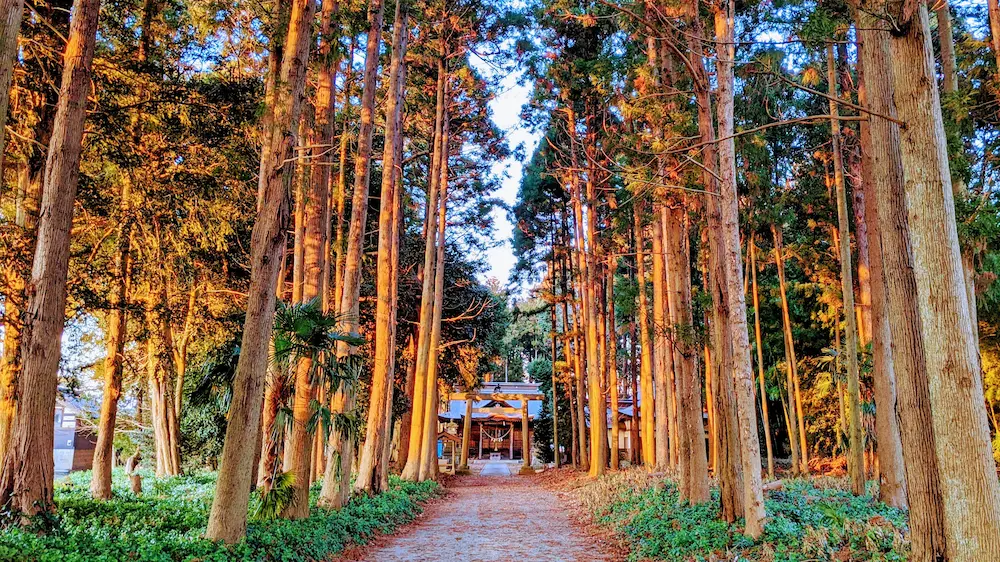
Each site has a stone marker or signboard explaining its history (Japanese only).
For an active traveler, the best way to enjoy these is by bicycle or running. Tokai is only ~7 km across, so you can explore all 12 in one day. Along the way, stop at local shops for dried sweet potatoes or fresh fruit.
How to Get Here
- Map available at the Tokai Tourism Association.
Tips
- No bike rental in Tokai. Consider bringing your own bike, or rent from nearby Omiya Station or Katsuta Station.
- Be cautious cycling along Route 245 — heavy traffic and some hilly sections.
🍠 Local Food & Dining in Tokai Village
Tokai may be small, but it’s big on flavor. Let’s look at its most famous local specialties.
Japan’s Best Dried Sweet Potatoes (Hoshi-imo)
Tokai is Japan’s top producer of dried sweet potatoes — a traditional Japanese snack made by steaming and drying sweet potatoes.
The local specialty is Maruboshi Hoshi-imo (whole dried sweet potatoes), which are more moist and chewy compared to the sliced version found in supermarkets nationwide.
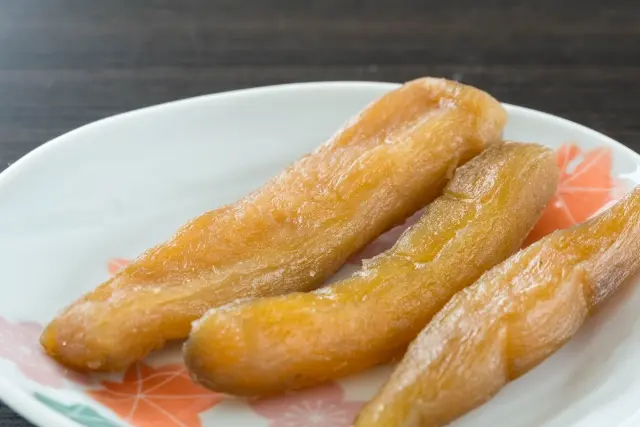
Where to Buy in Tokai
- Farmers Market Nijinaka
- Huge variety of dried sweet potatoes in winter.
- 🕖 9:30am–6:00pm (to 5:30pm in winter)
- ❌ Closed: Jan 1–3, 2nd Wed monthly
- Hoshiimo Co. Direct Shop
- Known for affordable “B-grade” dried sweet potatoes.
- Must-try: Yaki-imo Soft Cream (Roasted Sweet Potato Ice Cream) — only available here!
- 🕖 9:00am–5:00pm
- ❌ Closed: Tue
- 🚍 Bus available but limited → driving recommended.
Seasonal Fruits You Won’t Find in Supermarkets
Tokai’s fruits are so popular locally that they rarely reach supermarkets. Buying directly at small farms is the only way to enjoy them fresh.
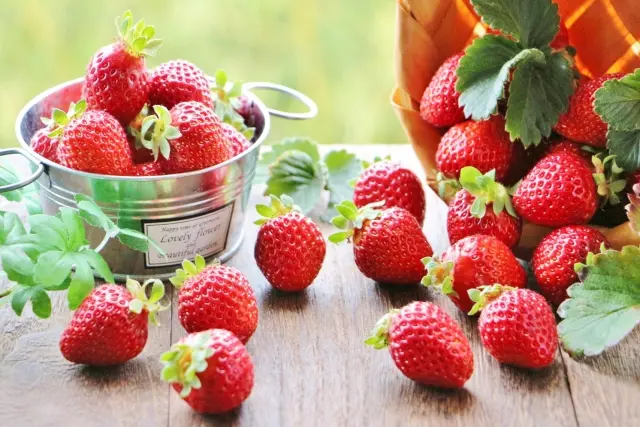
- Strawberries (Jan–Apr)
Tokai farms grow Ibaraki Kiss, a sweet and juicy variety. Locals line up early on weekends for these strawberries. - Pears (Aug–Sep)
Juicy “Kosui” and “Hosui” pears, picked fresh in the morning. - Grapes (Aug–Oct)
From Shine Muscat to rare varieties not sold elsewhere. Some farms offer tasting before buying.36
👉 For restaurant recommendations in Tokai Village, check my full guide: Top 4 Restaurants in Tokai Village
🚉 Access: How to Get to Tokai Village
Tokai is easy to reach from Tokyo by train.
- 🚆 By Train: From Ueno Station, take the JR Joban Line to Tokai Station (~90 minutes by limited express).
- 🚙 By Car: About 2 hours from Tokyo via Joban Expressway (Tokai Smart IC).
From Tokai Station, local buses and taxis are available, but limited. Consider renting a car in nearby Hitachinaka or Hitachi City if you want to explore freely.
💡 Tips for Foreign Visitors
Transportation & Mobility
- Limited buses in Tokai; car rental from nearby cities recommended.
- Check Ibaraki Kotsu bus schedules online (Japanese only).
Language Support
- Almost no English signs. Use translation apps.
- Save offline maps/screenshots before your trip.
Payment
- Cash needed at temples and small shops.
- Restaurants may accept QR payment, but not always credit cards.
Manners & Culture
- Don’t take photos or eat samples without buying at farm stands.
- Respect temples: follow etiquette and stay quiet.
- Simple greetings like Itadakimasu (before eating) and Gochisosama (after meals) leave a good impression.
Seasonal Highlights
- Winter: Dried sweet potatoes peak. Strawberries begin in January. New Year visits at Kokuzo-son Temple.
- Spring: Cherry blossoms at Akogigaura Park, canola flowers along Kuji River.
- Summer: Grapes and pears in season.
- Autumn: Tokai Autumn Festival & Oozora Marche. November is Shichi-Go-San (7-5-3 celebration for children).
🌸 Final Thought
Tokai Village may not be on the typical Japan travel map, but that’s where its magic lies.
With historic temples, seasonal fruits, Japan’s best dried sweet potatoes, and peaceful landscapes, Tokai offers an authentic slice of everyday Japan.
Whether you stop by on your way to Hitachi Seaside Park, or spend a full day exploring, Tokai will welcome you with its quiet charm and hidden treasures.
If you are looking for a unique, off-the-beaten-path experience in Japan — consider adding Tokai Village to your itinerary.
